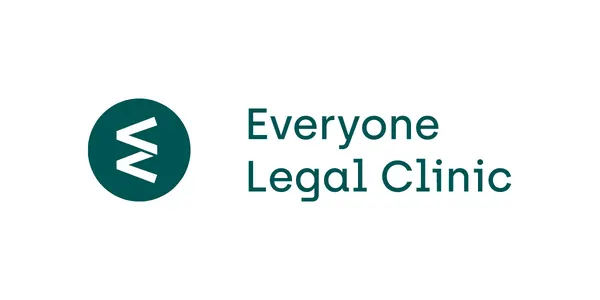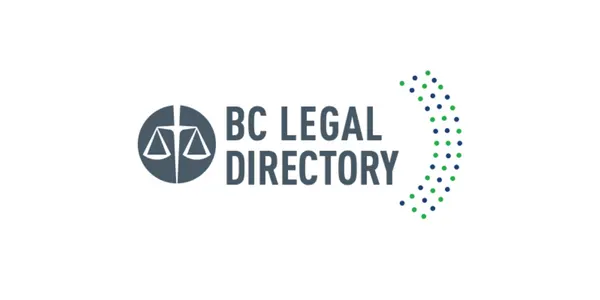If your application for probate or administration is rejected, you can correct the problems and re-apply. But this will cause delays. Here, we walk you through common questions asked about the main forms involved (which you can find here). We also offer some practical tips to make a successful application. Read on to give yourself the best chance of getting that grant the first time around.
Tips for making a successful application
It might sound obvious, but take the time to check over your documents for typos or mistakes. It's one of the main reasons that probate or administration forms are rejected.
Make sure exhibits are properly marked and signed. You’ll need to sign some of the forms in front of a lawyer, notary public, or a commissioner for taking affidavits. When you sign a document in front of them, it means you’re swearing that the information in the document is true.
If there’s nothing to list under one of the fields on a form, write nil or none. Blank spaces may suggest that information is missing. On the probate forms themselves, you might notice a few spots where you're instructed not to write "not applicable." In these instances, clearly state why the question or paragraph doesn't apply to you.
The law says you can only file your application with the probate registry 21 days after you’ve given notice (using form P1) and any applicable materials (such as a copy of the will) to everyone required.
Many applicants run into trouble when completing the submission for estate grant (form P2). It’s a long form. To avoid making common errors, read our information below on form P2.
Forms P3, P4 and P5 are alternate versions of the affidavit of applicant form. Below, we explain what form to use.
If you need to give notice to the Public Guardian and Trustee (using form P1), then they must comment on your application. The written comments will be sent to you and you must file them with the court. The probate registry cannot issue you a grant until they receive the comments. Let’s turn now to form P1, where (among other things) we explain when you must notify the Public Guardian and Trustee.
Notice of proposed application (form P1)
This form notifies certain people that you’re intending to apply for probate or administration.
Yes, if you're intending to apply for probate, you must attach a copy of the will. If you want to probate an electronic will, then anyone you give notice to can demand that you give them the will in its original electronic form (or give them access to it). You have seven days to comply with their demand.
You also need to attach any other testamentary documents. Examples include documents (other than wills) where the deceased:
gifts an asset or benefit to someone else, upon their death,
removes or appoints an executor, or
changes their will (such as through a codicil).
You don’t need to attach life insurance policies.
You don’t need to attach copies of other forms that will be included in the application you file with the court, such as the submission for estate grant (form P2) or affidavit of assets or liabilities (form P10 or P11).
If you're planning to apply for probate, the law says you must notify the following people that you intend to do so:
Anyone named in the will as an executor or alternate executor. You only have to notify those whose right to make an application (as executor) is prior to or equal to your right to do so. For example, say the will names you as one of two co-executors. If the other co-executor is not applying, you must notify them.
Each beneficiary under the will. There’s no minimum threshold. If someone will or may receive any amount of money or property under the will, you must give that person notice.
The spouse and any children of the deceased.
Anyone who would have been entitled to a share in the estate if a will didn’t exist. This rule is asking you to contemplate a hypothetical situation: what if the deceased had died without a will? Who would have been entitled to a share of the estate according to the law? This would depend on the relations that the deceased had when they died. Here’s an example of how this might play out.
Anyone who’s served a citation to you in relation to the deceased (such as a citation requiring you to apply for probate).
If the deceased was a Nisga'a citizen, the Nisga'a Lisims government.
If the deceased was a member of a treaty First Nation, the treaty First Nation.
If you're applying for a grant of administration
If you’re making an application for a grant of administration, the notice requirements are different. See applying for a grant of administration.
If a person you need to give notice to is a minor, you must give notice:
if the minor lives with all of the minor's parents, to those parents
if a parent or guardian is financially responsible for them, to that parent or guardian (if the minor doesn’t live with their parents)
if none of the above applies, to the minor at their home address
You must also give notice to the Public Guardian and Trustee, on behalf of the minor. There’s an exception to this requirement, where a testamentary trust exists and some other criteria are met. If you’re unsure whether you need to give notice to the Public Guardian and Trustee, you can contact them for guidance.
In this case you must give notice to all of the following:
Their nominee, if they have one. This is someone who’s responsible for the adult’s legal and financial affairs, such as an attorney under a power of attorney.
The Public Guardian and Trustee, on the adult’s behalf.
The adult themselves, unless they have a committee of estate for them. This is a person or body appointed by the court to make legal and financial decisions for someone who is mentally incapable and cannot manage their own affairs.
You generally don’t need confirmation that notice has been received. (The exception is if you deliver the notice electronically, such as by email or fax. In this case, you must receive written confirmation that notice has been received.)
As well, you must wait 21 days after you delivered the required notice (and any required materials, such as the will) before you can file the probate application with the probate registry. This gives each person receiving notice the chance to file a notice of dispute if they oppose your application.
Submission for estate grant (form P2)
This form provides details of your application to the probate registry. It indicates, for example, what type of estate grant you’re seeking, who is involved, and the materials in support of your application.
You should only submit one form P2, even when there is more than one applicant.
On form P2, you can request court-certified copies of the estate grant and some related documents. (Note the court charges a fee for each certified copy.)
Each financial institution holding estate assets will typically require a court-certified copy of the estate grant before they will release funds to the personal representative. As well, the land title office will require a court-certified copy of the estate grant to transfer any real property held by the deceased.
You can also request a court-certified copy of the estate authorization to obtain estate information (form P18). You only need that document if you don't have information about an estate asset, and so you don't know its value.
A grant is a document from the court that shows you have authority to deal with the estate assets. Form P2 requires you to select the type of grant you’re applying for. Here are the most common options:
Grant of probate: where there is a will and a named executor (or alternate executor) is applying for probate
Grant of administration with will annexed: where there is a will and someone other than a named executor is applying for administration
Grant of administration without will annexed: where there is no will and someone is applying for administration
Note the term annexed in this context means attached. Even though a grant of probate doesn’t use the word annexed, the will is also attached to the grant with that option.
Ancillary grants
There are two other grant options on form P2 dealing with ancillary grants. These can come into play when a grant was first obtained from a court outside of BC.
First a bit of context. There are two different pathways to deal with assets in British Columbia when someone’s estate is probated elsewhere.
One involves resealing (or verifying) a foreign grant. Say the deceased lived in Ontario but had property in BC. The personal representative would get a grant to deal with assets in Ontario, and could then apply to reseal the foreign grant for use in BC. This can be done using form P22 or form P23 if the foreign grant is from certain jurisdictions (the United States, Hong Kong, or any country in the British Commonwealth).
If the foreign grant is from any other jurisdiction, the personal representative can apply for an ancillary grant to deal with assets in BC. This is done using form P2. There are two ancillary grant options on form P2. The grant option you choose will depend on whether or not there is a will.
You should put the legal name of the deceased on the form. As well, include any other names they may have used to hold an interest in property. For more on naming the deceased on the form, see this recording at 48:30.
You’ll need to apply for a search of a wills notice (here's the form to do so). The search results will show whether the deceased ever registered any wills with Vital Statistics. You’ll need to submit two copies of the search results and any wills notices to the probate registry.
Searching for wills notices
Search for wills notices under all names of the deceased:
indicated on your form P2,
used in the will or other testamentary documents, and
used to hold real property.
The probate registry will expect this. Failing to do this is one of the top reasons why probate applications are rejected.
An original copy of the will must be filed with form P2. This includes any valid codicils.
Form P2 also asks whether the will refers to any other documents. For example, a will might refer to a letter of wishes about gifts to charities or guardianship of the will-maker’s children.
If the will refers to other documents and they are attached to the will, indicate that on the form.
If the will refers to other documents and they are not attached to the will, you have three options:
You can list the other documents and include them with the application.
You can list the other documents and explain you are not including them with the application because the documents are not testamentary. That is, they don’t form part of the will because, for example, they don’t express the will-maker’s wishes for their estate.
You can indicate you can’t obtain the documents.
For some registries, a reference to any document in the will might raise a question about whether it should form part of the will. That is, the registry may require you to file any such document, even if you think it’s not testamentary or that it’s not witnessed properly.
Lastly, if you find any wills or other testamentary documents dated after the will, you will need to file that document with a form P4 or P5.
On the P2 form, you have to select one of four schedules depending on the type of estate grant you are seeking. The schedule asks you to list parties who might have a role in the estate. For example, you will be asked to list any spouse or children of the deceased, and anyone who is named as a beneficiary in the will (if there is one) or who would be entitled to a share of the estate if there is no will.
If the deceased has no current spouse, you should indicate on the schedule to form P2:
No surviving spouse, as per section 2 of WESA.
You should say if the deceased had a former spouse. This will help avoid confusion. For example, you can write:
Sarah Sample (current spouse)
Elaine Example (former spouse)
Perhaps a person named in the will has since gotten married or divorced, and changed their name. Or perhaps the deceased just didn’t know how to spell a name! A misspelled name in the will doesn’t mean that person can’t receive a gift under the will.
Make sure the names used in the application reflect the names used in the will. Failing to do this could mean that your probate form is rejected.
For example, if you’re indicating the name of a beneficiary in form P2, you should write:
Conor Lapierre, named in the will as Connor Lappier
If you can’t find the originally signed version of the will, then you can submit a copy of the will.
You’ll need to indicate on form P2 why the original will isn’t available. The probate registry may ask you to provide sworn evidence to prove that it’s a true copy of the original will.
Affidavit of applicant (form P3, P4 or P5)
This affidavit form provides information about you and your relationship to the deceased.
Form P3 and form P4 are alternate versions of the same form, to be used if you’re applying for a grant of probate or a grant of administration with a will annexed.
Generally, a form P3 should be used for straightforward applications.
A form P4 should be used for applications with more complex issues. Some examples of when you should use a form P4 include:
you can’t find the original will, and you’re submitting a copy
the original will has been unstapled or re-stapled
the original will has other alterations, handwritten additions, or erasures
there are issues with the execution of the will
If you’re applying for a grant of administration without will annexed, you’ll have to complete a form P5.
It’s not a good idea to alter an original will in any way. This includes removing or adding staples.
If you’ve already removed staples from the will, you’ll have to prove the will hasn’t been tampered with. Write down the details: who did it, the date, location, and reason for unstapling the will. You’ll have to fill out a form P4 and swear an additional affidavit explaining how it happened.
Applications for probate or administration include several affidavits. On each affidavit form, you have to indicate what number the affidavit is — 1st, 2nd, 3rd, and so on. The number relates to the total number of affidavits in your application.
Here's an example. Let’s say you are filing an affidavit of applicant using form P3, an affidavit of delivery using form P9, and an affidavit of assets and liabilities using form P10. The P3 would be the 1st affidavit in the application, the P9 the 2nd affidavit, and the P10 the 3rd affidavit. If you later file a form 109 affidavit to correct an error or omission in the application, it would be the 4th affidavit in the application.
If there are multiple people applying for the grant, you can:
Have the P3, P4 or P5 sworn by one of the applicants. Each other applicant swears an affidavit in support (form P8).
All swear the same P3, P4 or P5 (as applicable). The form would need to be modified.
If you are applying for a grant of probate as the first-named executor, you do not need to list the alternate executor on the P3 or P4 form.
It’s important to indicate on the form why the first-named executor isn’t applying. (Failing to do so may cause your application to be rejected.) Some common reasons include that the named executor is:
Deceased.
Mentally incapable.
Simply unwilling to act. In this case, you should obtain a notice of renunciation (form P17) from the named executor, and file it with your application.
A co-executor is one of two (or more) executors named in a will to carry out its instructions. This is different from an alternate executor. An alternate is like a back-up executor — intended to act only if the first-named executor is unable (or unwilling) to act.
If a co-executor doesn’t want to apply for probate, that person can renounce their executorship (using form P17). This means they’re giving up their right to apply to be executor.
If a co-executor doesn’t renounce, the grant of probate must reserve the right of that person to apply at a later time. It’s a good idea to indicate on your form that the co-executor is not intending to apply or renounce.
Affidavit of delivery (form P9)
This affidavit form confirms that you’ve delivered notice of the application to everyone required under the law.
Yes, you can file one or more affidavits of delivery. The forms will collectively confirm that you’ve given notice to everyone you were required to tell about the application.
On the affidavit form, you have to indicate what number the affidavit is — 1st, 2nd, 3rd, and so on. The number relates to the total number of affidavits in your application. This includes other types of affidavits — such as the affidavit of applicant (P3, P4 or P5) and affidavit of assets and liabilities (P10) — in addition to the affidavit of delivery.
If the rules say you must deliver notice to the Public Guardian and Trustee, you must say that you’ve done so on the form P9. This tells the probate registry that they must wait for the Public Guardian and Trustee’s comments on your application before the registry issues a grant.
Affidavit of assets and liabilities (form P10)
This affidavit form tells the probate registry about the assets and liabilities of the deceased. The registry uses this form to calculate the probate fees owing.
You must list all of the deceased’s assets that will pass to you as the executor (or administrator). That is, any assets that form part of the deceased’s estate.
This includes:
all real property
all physical assets such as vehicles, boats, furniture, antiques, jewelry, and personal effects
all intangible assets such as bank accounts, investments, and company shares
all assets such as retirement funds where the estate is the beneficiary
an RESP where no one was listed to take over when the deceased died (called a successor subscriber)
Do a search for unclaimed property
As you compile the deceased’s assets, consider doing a search for unclaimed property in their name. Unclaimed property is money an organization holds that the rightful owner doesn’t know about or hasn’t dealt with in a long time. In BC, sources of unclaimed property include dormant credit union accounts, unclaimed court funds, and insurance payments. BC Unclaimed, a non-profit society, maintains a searchable database of unclaimed property in the province. You can search it here to see if the agency is holding money in the deceased’s name.
Federal sources of unclaimed property include dormant bank account balances, Canada savings bonds, and other federally regulated funds. You can search for federal sources of unclaimed property in the deceased’s name on the Bank of Canada's website.
There are certain assets that won’t pass to you. For example, assets held in joint tenancy typically pass automatically to the other joint tenant on the deceased’s passing.
There are also certain assets that will pass directly to a beneficiary that the deceased specifically named, as in a registered retirement plan or life insurance policy.
Usually, you must disclose all of the deceased’s property that will pass to you. (If the deceased didn’t ordinarily live in BC, and you’re completing a form P11, you only need to disclose property that’s within BC.)
The form P10 requires you to list all of the deceased’s assets and the value of each. Wherever possible, you should provide the market value of each asset. The asset should be valued as at the date of death (not at the time you submit the probate application). For more on this point — and other aspects of completing the form P10 — see this recording at 50:20.
Someone holding the deceased’s assets (such as a bank) may refuse to give you any information. If this happens, you can still apply for probate or administration.
File all of the other application documents, except for the form P10. At the same time, you can apply for authorization to obtain estate information using form P18. If the court grants your request, third parties must give you information relating to the deceased’s assets, when you present them with form P18.
You only need to list secured debts on the P10. With a secured debt, the lender can seize or sell the asset in order to collect the funds owed to them. The most common examples are a mortgage on a home, or a car loan. For example, if someone fails to make payments on a mortgage, the bank has a legal claim to the asset (the home).
You don’t need to list any other types of liabilities, such as a credit card debt. You also don’t need to include expenses or liabilities that come up after death (such as funeral expenses) on the form P10. Note however that these kinds of expenses do reduce the value of the estate, so you should include them in your accounting to beneficiaries.
If the information you provided on the form P10 was incorrect or incomplete, you can let the registry know by later filing form P14. If you discover additional assets, you may need to pay additional probate fees.
Correction affidavit (form 109)
This form comes into play if in reviewing your application for an estate grant the probate registry finds any errors or omissions. The registry will ask you to address these deficiencies by completing an affidavit using form 109 of the civil forms.
At the top of the affidavit form, you have to indicate what number the affidavit is — 1st, 2nd, 3rd, and so on. The number relates to the total number of affidavits in your application.
By this point in the process, you will have submitted several affidavits. You may, for example, have filed three affidavits (an affidavit of applicant, an affidavit of delivery, and an affidavit of assets and liabilities). If so, that would make the form 109 affidavit to correct an error or omission the 4th affidavit in the application.
The form 109 affidavit is used for a range of civil legal matters, so includes terms for parties such as plaintiff and petitioner. Estate matters don’t use those terms but instead use a specific format:
In the Matter of the Estate of [Legal Name of Deceased], deceased
The fillable PDF of form 109 includes a button for “In the Matter of…” that switches the party names area to this estates format.
The probate registry will indicate what errors or omissions you need to address. They typically provide a checklist. In your correction affidavit using form 109, address each deficiency in a separate paragraph.
For example, let’s say the registry indicates that your material had two deficiencies:
Form P2 didn't include information for one of the questions on the form. (A common error is writing "not applicable," which the registry does not accept; if there’s nothing to list for a question on a form, they accept nil or none.)
Form P3 was missing a paragraph.
In your correction affidavit, in paragraph 1, you can reproduce the relevant question from form P2 and write none or nil. In paragraph 2 of the affidavit, you can include the missing paragraph from form P3.
Who can help

Self-Counsel Press
Their probate kit can be helpful if you're applying for probate or administration without a lawyer's assistance.

Public Guardian and Trustee
A government office that can manage an estate, for a fee, when the executor is not able or willing to do so, or when someone dies without a will.

Law Society of BC
Their practice refresher course material includes a detailed walk through of applying for probate or administration.

Access Pro Bono's Free Legal Advice
Volunteer lawyers provide 30 minutes of free legal advice to people with low or modest income.

Access Pro Bono’s Everyone Legal Clinic
Clinicians provide affordable fixed-fee services on a range of everyday legal problems.

Lawyer Referral Service
Helps you connect with a lawyer for a complimentary 15-minute consult to see if you want to hire them.

BC Legal Directory
Search for a lawyer by community or legal issue. From the Canadian Bar Association, BC Branch.


